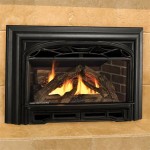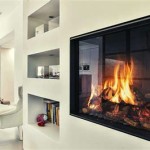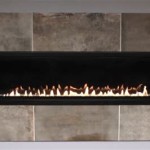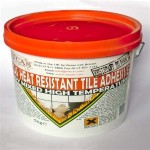Char-Broil Outdoor Fireplaces: Extending the Season and Enhancing Outdoor Living
Outdoor fireplaces are increasingly popular additions to residential landscapes, providing warmth, ambiance, and a focal point for social gatherings. Char-Broil, a well-known brand in outdoor cooking and heating, offers a range of outdoor fireplaces designed to cater to various needs and preferences. Understanding the features, benefits, and considerations associated with Char-Broil outdoor fireplaces is crucial for homeowners seeking to enhance their outdoor living spaces.
Char-Broil's selection encompasses different fuel types, construction materials, and aesthetic designs, allowing consumers to choose a unit that complements their existing outdoor décor and meets their specific heating requirements. This article will examine the core aspects of Char-Broil outdoor fireplaces, focusing on key features, considerations for selection, and general maintenance practices to ensure longevity and optimal performance. The focus is on providing a comprehensive overview to aid informed decision-making when considering the purchase of a Char-Broil outdoor fireplace.
Understanding the Variety of Char-Broil Outdoor Fireplace Models
Char-Broil's outdoor fireplace lineup typically includes models fueled by wood, propane, or natural gas. Each fuel type offers distinct advantages and disadvantages that influence the overall user experience. Wood-burning fireplaces provide a traditional aesthetic and the authentic crackling sound of a real fire, appealing to those seeking a rustic ambiance. However, they require a consistent supply of firewood, produce smoke, and necessitate regular cleaning to remove ash.
Propane and natural gas fireplaces offer greater convenience and control. They ignite quickly, produce minimal smoke, and allow for adjustable flame heights. Propane fireplaces are portable, utilizing refillable propane tanks, while natural gas fireplaces require a permanent connection to a natural gas line. The choice between propane and natural gas depends on the availability of a natural gas connection and the desired level of portability. Char-Broil generally offers a range of both options. Models vary in size, heat output (measured in BTUs for gas models), and design. Some are freestanding units, while others are designed to be built into existing patios or outdoor living areas.
Material construction also plays a significant role in the durability and aesthetic appeal of Char-Broil outdoor fireplaces. Common materials include steel, cast iron, and copper. Steel fireplaces are generally more affordable and lightweight, but may be more susceptible to rust if not properly maintained. Cast iron fireplaces offer excellent heat retention and durability, but are heavier and may require more careful handling. Copper accents or entire copper structures add a touch of elegance and resist corrosion, but typically come at a higher price point. The specific materials used in a particular model will influence its overall performance and lifespan.
Key Considerations When Selecting a Char-Broil Outdoor Fireplace
Choosing the right Char-Broil outdoor fireplace requires careful consideration of several factors. Firstly, the size of the outdoor space is a primary determinant. A larger area requires a fireplace with a higher BTU output (for gas models) or a larger firebox (for wood-burning models) to effectively heat the surrounding area. Conversely, an oversized fireplace in a small space may produce excessive heat, making it uncomfortable for users.
Secondly, local regulations and safety codes must be adhered to. Many municipalities have restrictions on open burning, including wood-burning fireplaces. It is crucial to check with local authorities regarding permissible fuel types, setback requirements from property lines, and any necessary permits. Gas fireplaces typically have fewer restrictions but still require compliance with relevant gas codes. Failure to comply with local regulations can result in fines or the forced removal of the fireplace.
Thirdly, the intended use of the fireplace will influence the selection process. If the primary goal is to provide ambiance and a visual focal point, a smaller, decorative fireplace may suffice. However, if the fireplace is intended to be a source of significant heat for extending outdoor living into cooler months, a larger and more powerful unit is necessary. Consider also the frequency of use. For occasional use, a wood-burning or propane fireplace might be suitable. For frequent use, a natural gas fireplace offers the convenience of readily available fuel and eliminates the need to refill propane tanks.
Fourthly, evaluate the aesthetic appeal of the fireplace in relation to the existing outdoor décor. Char-Broil offers a variety of styles, from modern and minimalist to traditional and rustic. Choose a fireplace that complements the overall design of the patio or outdoor living area to create a cohesive and visually appealing space. Consider features such as built-in storage for firewood (for wood-burning models) or decorative accents that enhance the aesthetic appeal.
Finally, consider the long-term maintenance requirements associated with each type of fireplace. Wood-burning fireplaces require regular cleaning to remove ash and creosote buildup, which can pose a fire hazard. Gas fireplaces require periodic inspection of the gas lines and burner components to ensure safe and efficient operation. Proper maintenance is essential for extending the lifespan of the fireplace and preventing potential safety issues.
Maintenance and Safety Practices for Char-Broil Outdoor Fireplaces
Regular maintenance is crucial for ensuring the safe and efficient operation of a Char-Broil outdoor fireplace. For wood-burning models, the accumulation of ash and creosote poses a significant fire hazard. Ash should be removed regularly, ideally after each use, once the ashes have cooled completely. Creosote, a highly flammable byproduct of wood combustion, can build up in the chimney or flue over time. It is recommended to have the chimney professionally inspected and cleaned at least once a year, or more frequently if the fireplace is used extensively. Using seasoned, dry firewood can help minimize creosote buildup.
For propane and natural gas fireplaces, regular inspection of the gas lines and burner components is essential. Check for leaks by applying a soapy water solution to the connections and observing for bubbles. If a gas leak is detected, immediately shut off the gas supply and contact a qualified technician. Clean the burner components regularly to remove debris and ensure proper flame distribution. Follow the manufacturer's instructions for cleaning and maintenance procedures. Always disconnect the propane tank or shut off the natural gas supply before performing any maintenance.
Safety is paramount when operating any outdoor fireplace. Always keep a fire extinguisher readily accessible. Never leave a fire unattended, especially if children or pets are present. Maintain a safe distance between the fireplace and flammable materials such as furniture, plants, and overhanging structures. Use a spark screen or mesh cover to prevent embers from escaping the firebox. Educate all users about the safe operation of the fireplace and the potential hazards associated with open flames.
Proper ventilation is crucial, particularly in enclosed or partially enclosed spaces. Carbon monoxide, a colorless and odorless gas produced by burning fuel, can be deadly. Ensure adequate ventilation to prevent carbon monoxide buildup. Never operate a fireplace indoors or in a garage. Install a carbon monoxide detector in nearby structures to provide an early warning of potentially dangerous levels. Regularly inspect the fireplace for signs of damage or deterioration. Cracked firebricks, rusted metal, or damaged gas lines should be repaired or replaced promptly to prevent safety hazards.
When storing a propane fireplace during the off-season, disconnect the propane tank and store it in a well-ventilated area away from heat sources. Cover the fireplace to protect it from the elements. For natural gas fireplaces, consider having a professional inspect the gas line and burner components before storing the unit for an extended period. Following these maintenance and safety practices will ensure the longevity of the Char-Broil outdoor fireplace and provide years of enjoyment.

Char Broil Tino Deluxe Outdoor Fireplace

Char Broil Tino 01505710 Wood Fireplace Com

Sunnydaze Decor 32 In Black Steel Pagoda Style Wood Burning Fireplace Kf 499 The Home Depot

Charbroil Tino Outdoor Fireplace 01505710 At Appliancesconnection Com

Sunnydaze Decor Pagoda Style Steel Enclosed Outdoor Fireplace Heater Willowbrook Ping Centre

Charbroil 03505774 Parts Bbqs And Gas Grills

23 5 Fire Pit Portable Charbroil Grill Backyard Large Steel Outdoor Modern Firepit China Made In Com

Sunnydaze Pagoda Style Steel With Black Finish Outdoor Fireplace 32

Char Broil 463285022 4 Burner Vibe 535 Gas Grill Target

Nibble Me This Review Char Broil Cruise Grill With Control Technology Msrp 699
Related Posts








